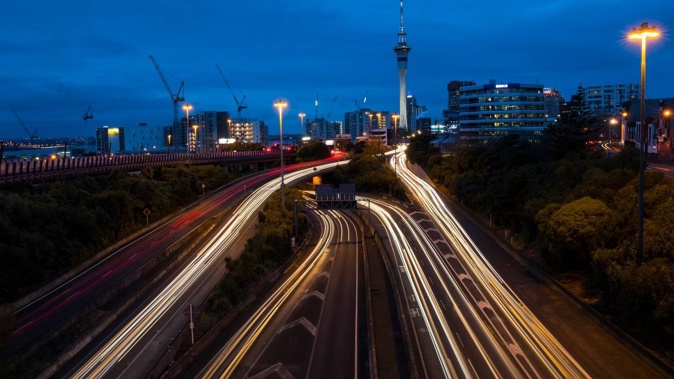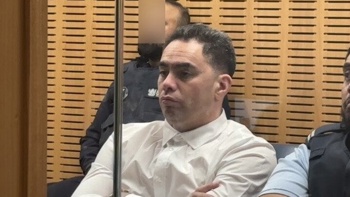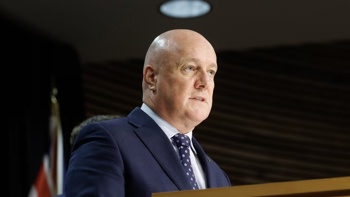
The Government is stepping in to cut the number of kilometres Aucklanders drive by nearly a third to curb the city’s globally high transport emissions rate.
The planned cuts by 2035 stem from one of the targets in the Government’s Emissions Reduction Plan to achieve net zero emissions by 2050.
But the proposal, which is scant in detail, has been criticised as adding to the bureaucratic process with “a never-ending merry-go-round of plans” and perceived as a “war on private vehicles”.
Transport Minister Michael Wood, who is also the new Minister for Auckland, said: “Once we have a clear target in place we can look at the investments required to get there.”
The Auckland Council, with three of its own plans to reduce transport emissions, has signed up to a convoluted process to develop an Urban Vehicle Kilometres Travelled Reduction Programme by December this year.
/cloudfront-ap-southeast-2.images.arcpublishing.com/nzme/G66MFPH2TSQW5WHI6HEH5UGETI.jpg)
The plan is for more people to cycle and fewer people to drive to work. Photo / File
The measures apply only to cars. Trucks and heavy vehicles are outside the programme.
When the process was outlined at City Hall last week, councillor Mike Lee said “there seems to be a war on private vehicles” at a time when more motorists are ditching carbon-emitting cars for electric vehicles (EVs).
Mayor Wayne Brown has no interest in the programme at present and the Automobile Association said Auckland “needs to get its transport emissions down by taking pragmatic action, not a never-ending merry-go-round of plans”.
Wood said the Auckland programme builds on work done by the council and is part of broader plans for the country.
National Party transport spokesman Simeon Brown said that rather than coming up with a costly bureaucratic process for people to drive less the answer is building infrastructure that gives people more travel options.
Getting Auckland’s programme up and running is a convoluted process involving the Ministry of Transport, Waka Kotahi NZ Transport Agency, council officials and a council reference group of councillors, Auckland Transport representatives, the Māori Statutory Board and mana whenua.
“This is a reasonably complex programme to put together even though we have done some work in the past on this,” senior council planner David Hawkey told councillors last week.
/cloudfront-ap-southeast-2.images.arcpublishing.com/nzme/WDSB4CB2QFEXBGYZMO7KAESQ3A.jpg)
One option is to manage car parking at major destinations. Photo / Alex Burton
Waka Kotahi says to meet the national target of 20 per cent fewer kilometres travelled, car use in Auckland will have to fall from 2019 levels by 29 per cent by 2035.
“Rapid radical change” would deliver benefits but present major challenges, said the transport agency.
Suggestions put forward by the agency to meet the Auckland target are uncosted and general in nature but include reallocating road space for public transport, cycling and walking, and managing car parking at major destinations and employment areas.
For the programme to be successful, the Government, Waka Kotahi and the council will have to significantly boost the $37 billion investment package in Auckland’s current 10-year transport plan, which forecasts an increase in vehicle kilometres travelled from 16 billion kilometres in 2019 to 18 billion by 2031.
Auckland has the fifth highest rate of car ownership per capita in the OECD and one of the highest rates of transport emissions per capita in the world.
In late 2021, 1.26 million cars were on the road and 70 per cent of journeys to work were by car.
Brown is not interested in the programme at present, saying he is focused on working with Wood on an integrated transport plan for Auckland.
“This will lay out the overarching direction for transport priorities and investment in our region, including how climate change will be considered,” he said.
Wood said the council has done a lot of work in the area of reducing transport emissions, and Waka Kotahi is developing broader plans for the country.
“I think because Auckland Council and Auckland Transport have done the work it’s a comparatively easier exercise because they actually have a lot of the work already done,” Wood said.
/cloudfront-ap-southeast-2.images.arcpublishing.com/nzme/57M6D2CU4RDGDOGAQAFMC3WEBM.jpg)
Transport Minister Michael Wood and Opposition transport spokesman Simeon Brown have different takes on the vehicle kilometres travelled reduction plan. Photo / Herald
Asked why the Government was targeting car use to reduce carbon emissions when there’s a shift to electric cars, Wood said “if we go absolutely gangbusters” and make progress New Zealand will get to about 30 per cent electric vehicles by 2035.
“That is why, if you are serious about carbon emissions, you still need to have those measures. The way you do it … is you give people more options.
“The target is just the target. It’s actually the stuff you do that matters. Once we have a clear target in place we can look at the investments required to get there,” Wood said.
AA policy director Martin Glynn said the programme means more time and money spent in committees and around whiteboards discussing the same stuff and less time and money to do stuff that will help people get around the city in more sustainable ways.
“This covers the same ground as the Auckland Plan, the Climate Action Plan, the Transport Emissions Reduction Pathway and the statutory Regional Land Transport and the Regional Public Transport Plans,” Glynn said.
Take your Radio, Podcasts and Music with you









